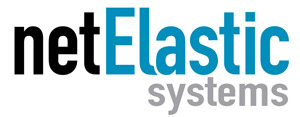Broadband access has become essential to our professional and personal lives. Most people now rely on the internet for much of their daily existence. Given this importance, the internet is being viewed as a fundamental human right. And governments and broadband providers around the world are investing money to ensure broadband access is available to all.
Network Traffic
Everyone knows network traffic has increased significantly during the pandemic. However, even when the pandemic subsides, bandwidth demand should remain high due to the stay-at-home economy, the proliferation of connected devices, and increased demand for video and gaming. What does this mean for the network?
The global pandemic has shined a bright light on the need for network agility. Networks need the ability to quickly adapt to changing demands.
Why Virtual Broadband Network Gateways?
Broadband network gateways (BNGs) are an essential network component, since they’re the access point for individuals (subscribers) to connect to the broadband network. The BNG aggregates traffic from many subscribers and routes it to the network of the service provider. Once connected, a subscriber can access the broadband services delivered by their provider.
Traditional BNGs bundle software with proprietary hardware. These “closed-systems” bring about challenges since they’re very difficult to scale. Closed systems also result in high costs and minimal flexibility.
As broadband providers continue to invest in their networks, here are some of the top reasons why they should be investing in Virtual, or software-based BNGs.
1. Scalability
What is scalability? A scalable network can handle current demand and can also expand to meet future demand without having to redesign the network. In essence, scalability is the ability to scale or expand your network to accommodate future growth.
In contrast, limited scalability means there are limitations on network growth before you have to engage in significant network redesigns and forklift upgrades. Legacy hardware-based BNGs offer limited scalability and result in continual purchases of additional network appliances.
Virtual BNGs eliminate this problem by decoupling BNG software from the hardware. Instead of legacy BNGs with proprietary hardware, virtual BNGs run on white-box, x86 servers.
Built upon software and network virtualization technologies, vBNG uses software to provide critical network functionality. With a virtual BNG, service providers can scale up available bandwidth capacity on-demand. vBNG also separates the data plane and control plane so each can be scaled independently, which provides the ability to dynamically adjust the network based on constantly changing requirements.
2. Lower Costs

Another benefit of disaggregating network software from hardware is that it significantly lowers costs. With fixed-capacity routers, you need to buy additional routers to meet increasing traffic demands. With vBNGs, it’s takes a few software commands.
BNGs from traditional router manufacturers also negatively impact cash flow. Their lack of scalability means broadband providers have to purchase more hardware than they need today, in order to support network and subscriber growth in the future. Unfortunately, it’s often difficult to recoup these up-front hardware costs since traffic and subscriber revenue can come much later than the initial investment.
3. Software is the Future
“The global network function virtualization (NFV) market is expected to reach $50.3 billion by 2026, a compound annual growth rate of 33.2% during 2021-2026,” according to 360 Market Updates.
Many broadband providers have already made substantial progress in virtualizing their networks. For instance, AT&T has seen significant increases in demand due to the global pandemic and has been building a virtualized, fiber-based network to serve many customer segments.
Igal Elbaz, AT&T’s Senior VP of wireless technology, said that backbone traffic has gone up 20%, with overall data growth during the pandemic equal to what the carrier would normally expect to see in a 12-18 month period. He credited AT&T’s move to virtualization as part of what helped it deal with the rapid traffic changes.
“That was really an essential capability when we went through Covid, because there were points in the network where we needed to add capacity quickly, and the fact that we had the infrastructure and the knowledge of how to use virtualization helped us to bring capacity quickly to serve customers,” Elbaz said.
Download our guide on preparing for the Exabyte onslaught with next-generation vBNGs.
4. Flexibility
Purchasing and installing hardware routers are time consuming. And making changes to hardware-based BNGs require long lead times since hardware appliances need to be configured one at a time.
In contrast, virtual BNGs are easy to deploy, implement, and upgrade. When additional capacity is needed, the changes can be made in software in just minutes.
The Next Step
Interested in learning more about Virtual BNGs? Click here to set up a few minutes with one of our networking experts.

